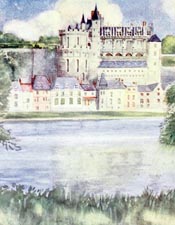Aucassin & Nicolette
, translated by Kline, A. S. (contact-email)
The 13th-century chantefable of Aucassin is an anonymous work clearly designed for acting out, complete with musical annotations in troubadour style. Walter Pater’s 1872 essay in The Renaissance discusses the work’s distinct tone of individualism, similar to the Heloise letters and Tristan and Iseult legend. This tone, which opposes traditional norms, appears in various medieval French texts. The rebellious spirit was partially suppressed by the Albigensian Crusades but possibly contributed to the vigour of France’s Silver Renaissance and influenced the Enlightenment and French Revolution. Both Aucassin and Pater’s The Renaissance are noteworthy for their intrinsic merits.

Kline, A. S.
Support Open-Access:
Your contribution keeps our classical translations available to all. Every dollar helps support classics education and funds the expansion of our catalogue. Value what we do? Donate now.
File Downloads:
© Copyright, All Rights Reserved. This work may be freely reproduced, stored and transmitted, electronically or otherwise, for any non-commercial purpose. Conditions and Exceptions apply.